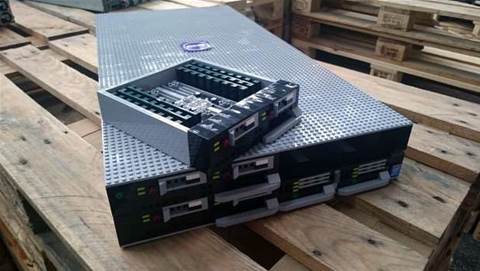Security experts have warned of a new variant of the Pushdo trojan that mixes legitimate and illegitimate HTTP requests to avoid detection.

The Pushdo botnet, also known as Cutwail, was responsible for some 13.5 percent of malware activity in March 2008 and involved up to 2 million infected computers in June 2009.
Researchers said last week that a new version had infected more than 100,000 computers since the beginning of August.
Brett Stone-Gross of the Dell SecureWorks Counter Threat Unit said the unit had detected compromised machines across the globe since late July, with many cases concentrated in Asia.
He recommended keeping web browsers and software up to date, in particular Adobe Flash, Reader and Java.
Avoiding detection
As is the case with most botnet scenarios, computers that are infected with Pushdo attempt to communicate with their command-and-control server for instructions.
Pushdo botmasters have customised the malware so that it simultaneously delivers HTTP requests to some 300 lesser known, but legitimate, websites, which mixes in with traffic meant for the command-and-control hub, Stone-Gross explained.
"The purpose of the HTTP requests to legitimate sites is to make it harder to identify C2 (command-and-control) traffic, [which] also uses HTTP," he said.
"As a result, security researchers have to sift through all of the HTTP requests in order to locate the C2, which is important for detection and mitigation efforts."
In some cases, the sites receiving the bogus HTTP traffic are flooded to the point that they are knocked offline.
Dell's CTU team also found that Pushdo malware generates a specific HTTP request, which starts with a “?xclzve_” prefix, and can be used to help determine which HTTP requests are legitimate.
Previous versions of Pushdo have taken a similar tactic, but they sent traffic to very popular sites, like Yahoo, Twitter and the FBI. Targeting smaller sites enables the botnet to fly under the radar, Stone-Gross said.
Joining the botnet
Once machines are infected with Pushdo, the botnet is used to deliver malicious emails with links to websites that foist banking trojans, such as Zeus, Torpig and Bugat.
Sometimes, the messages are made to look like credit card statements or they contain an attachment disguised as an order confirmation.
The botnet's purveyors also have been known to strike up deals with rogue online pharmacies, in which they are paid to drive traffic to these shady companies through links.
“Pushdo is generally spread by drive-by download attacks, which means if you visit a website or you click on a link and your machine is vulnerable to the threat, it can automatically download the malware without you seeing anything,” Stone-Gross said.
“A user would not see anything obvious. The only thing they might notice is that their computer runs a bit slower. Pushdo also installs a rootkit and is able to hide other malware, which makes it harder for anti-virus programs to detect."
Kurt Baumgartner, senior security researcher at Kaspersky Lab, Pushdo malware has used well-known techniques to trick victims over the years.
“Regardless of the component connecting back to C2 (command-and-control) servers, their group's technique for ‘camouflaging' their C2 traffic by creating chatter with legitimate sites is well known,” Baumgartner wrote of Pushdo.
“In early 2010, a variant made the news because the developers improperly coded their bot variant and accidentally began a phony SSL traffic DDoS attack on a long list of sites, including the CIA, Google, Mozilla, Skype, and other legitimate websites.”


_(5).jpg&h=140&w=231&c=1&s=0)

.png&h=140&w=231&c=1&s=0)



.png&w=100&c=1&s=0)

 iTnews Benchmark Security Awards 2025
iTnews Benchmark Security Awards 2025
 Digital Leadership Day Federal
Digital Leadership Day Federal
 Government Cyber Security Showcase Federal
Government Cyber Security Showcase Federal
 Government Innovation Showcase Federal
Government Innovation Showcase Federal
 Digital NSW 2025 Showcase
Digital NSW 2025 Showcase












_(1).jpg&h=140&w=231&c=1&s=0)



